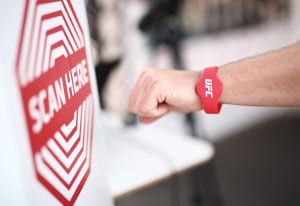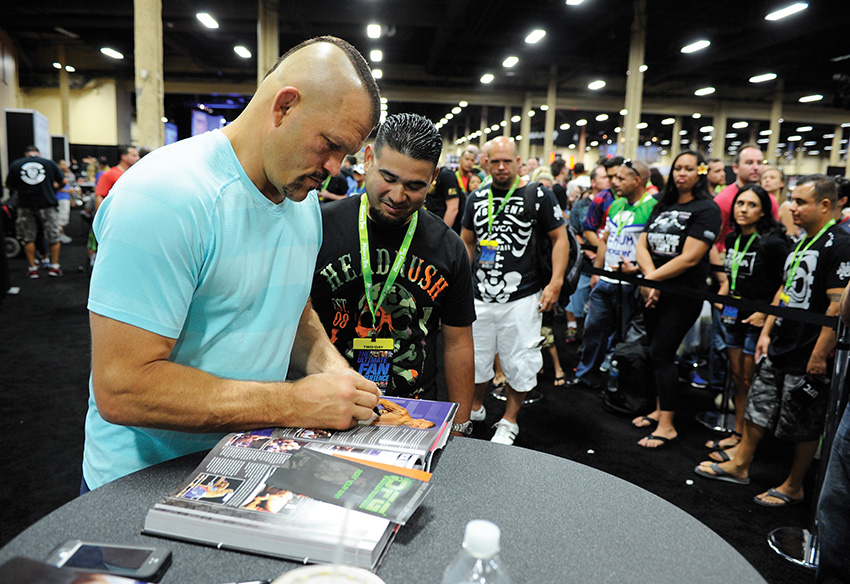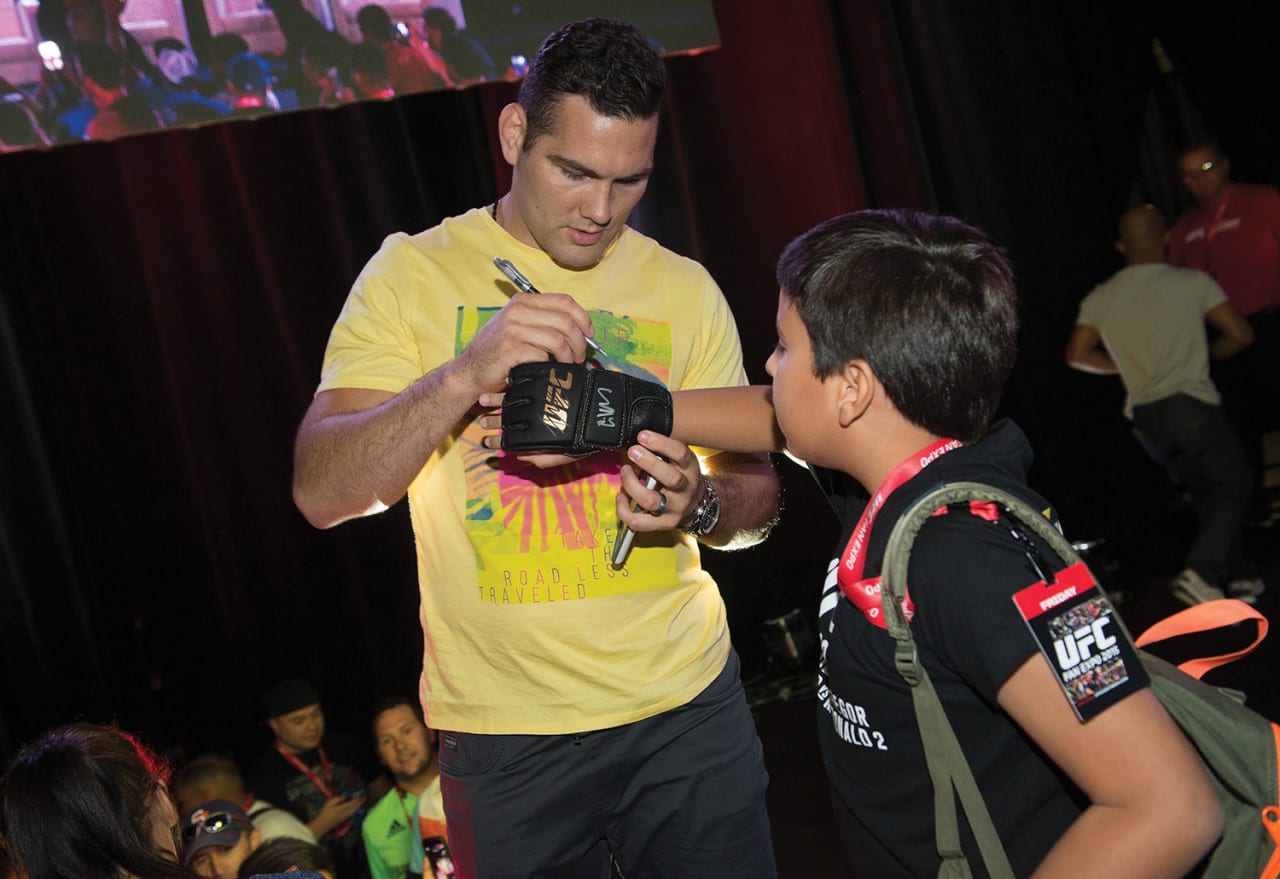
Tapping towers throughout the UFC’s International Fight Week unlocked unique experiences for fans.
A focus on the fan experience gives the UFC a fighting chance
When the Ultimate Fighting Championship (UFC) was established in 1993, no one had ever heard the term “mixed martial arts.” The organization had set out to spotlight the most effective martial arts discipline for unarmed combat, and the rules were, there were no rules. But by 2011, regulations were in place, mixed martial arts was a definitive sport and the UFC had battled its way into the mainstream with a seven-year broadcast agreement with FOX Sports Media Group.
The organization has since become the world’s largest and most distinguished mixed martial arts promotion company, whose evolution has been driven by an aggressive event marketing strategy. According to Jessica Roosli, former vp-global brand marketing fan experience at UFC, the company’s transformation can be attributed to two developments—global growth and the expansion of the brand’s identity outside the “octagon.”
When Roosli first joined the UFC in 2011, it was a pay-per-view based company whose handful of live events were sold on the platform. Fights took place in major cities like London and Tokyo and the brand paid little attention to the local market.
As the UFC grew its global audience, it went from producing 15-20 events per year to a roster of more than 40. The brand forged stronger broadcast partnerships, implemented an aggressive social media strategy in the regional voice and deployed talent relations groups in cities around the globe that promoted its fighters in-market. “So now we’ve created this environment of the brand outside the octagon and that’s where event marketing, for me, really came into play,” says Roosli.
The UFC’s event marketing strategy was no longer about one fight, but about the six to eight week build-up for the event, and how consumers engage with the brand throughout the process across social media, FightPass (UFC’s paid digital service) and the live event.
By July 2015, the UFC’s growth had prompted a total rebrand. The organization unveiled its new identity in its hometown of Las Vegas at International Fight Week, which serves as the Super Bowl of UFC events. There, the brand connected hundreds of tablets, QR readers, RFID/NFC devices, streaming cams, touchscreens, DSLR cameras, mobile devices, video cameras and more across every corner of Sin City to give fans and attendees access to its brand and its athletes, in a new and unprecedented way.
The technology-fueled activation would serve as a model for the brand’s Fan Village strategy, which is deployed at 10-15 fights per year and includes activations by both the UFC and a host of sponsors. Fans access the Village after registering for a “fan band,” which is used at scanning towers throughout the Village to reveal different activations and, ultimately, provide the brand with motion tracking data. UFC engagements inside the village include stations where consumers can get their hands wrapped like a fighter, measure how hard they hit and take fighter faceoff photos. Tapping the towers also unlocks special access, autograph sessions and engagements with UFC athletes at venues across the host cities.

Athlete appearances are one of the many ways UFC is giving its event attendees experiences and content worth sharing.
Technology will also guide the UFC’s future. The strategy behind the property’s high-tech takeover of Las Vegas for International Fight Week will continue to expand, allowing the brand to execute true city takeovers in a number of locations. Among the 80,000+ fans that attended the event in 2015, more than 13,000 participated in at least one activation, with many participating in as many as 85 activations. To boot, the brand recorded 12,500 rewards check-ins and extended the reach of the event by 400 times through social amplification, including 14,000 photos, videos and GIFs shared by fans.
The brand also aims to kick its consumer engagements up a notch. “We’re working on audiovisual mapping inside of a tunnel where you can go and experience what it really feels like to walk out from a fighter’s point of view,” Roosli says. “The plan is to build that [tunnel experience] into a 40-foot long container and ship it all over the world.”
What the brand won’t change, Roosli says, is its commitment to providing superior fan experiences before, during and after an event.
“Fan experiences are added value to what happens inside the octagon,” she says. “So you might buy that ticket, but now my job is to say, ‘How am I going to create a whole day around this?’ and, ‘Why should you actually go to the event as opposed to just buying it at home?’ Or, ‘How can I make the buy at-home experience more event-like?’ And it isn’t that this just happened that way; we built it that way.”
*This article was originally published in 2016 and is updated periodically
See also:
• How the UFC Dominated Las Vegas with a High-Tech Takeover
• How Properties Like CrossFit are Changing Sports Sponsorships
• Three Insights on Fan Experiences From Red Sox CMO Adam Grossman
This story appeared in the Feb/March 2016 issue






